[vc_row][vc_column][vc_column_text]Fear is the universal emotion, pre-programmed into all animals and humans, that serves as an instinctual response to protect us from potential danger. However, inappropriate fear responses can become debilitating. Unique to any other human emotion, fear at its worst can become a destructive master of our thoughts and behaviors.
Not only is fear the most common cause for stagnation and personal failure for most people, it can activate survival oriented behaviors leading to substance abuse, drug addiction and alcoholism for many more.
The Driving Force Behind The Human Emotion of Fear
Fear is that life saving, yet often unpleasant, emotion caused by the belief that someone or something is dangerous, poses a threat, and is likely to cause us physical or emotional pain. When we are overcome with fear, it creates a change in our brain activity and the functioning of our organs, which ultimately impacts our behavior.
A natural chemical called adrenaline, and the stress hormone cortisol, are released into the blood stream at the very onset of fear in order to prepare the body for a fight or flight response. Real fear happens at the onset of danger, however, anxiety can be induced by the crippling apprehension when we don’t know what’s happening next, and we fear we will be unable to control the unknown.
Masking Fear with Drugs and Alcohol to Cope
The emotion of fear itself evokes physical feelings of stress, anxiety and an increase in blood pressure. And, many people will seek comfort from drugs or alcohol as a coping mechanism to help ease the pain and anxiety associated with fear. In addition, those who abuse drugs and alcohol for an extended period of time may actually develop additional crippling phobias.
Further adding to the cycle of addiction is that prescription medications are often prescribed to those who suffer from anxiety. And these prescription medications, like benzodiazepines, are not only highly addictive but can be potentially lethal when mixed with alcohol by the user.
False Evidence Appearing Real Leading and Healing Rooted Issues
In most cases, the age old acronym for fear remains true to this very day; False Evidence Appearing Real. False evidence appearing real can have devastating side effects on your psyche and can paralyze your mind, seep into your heart, create a faulty belief system and stunt your personal growth.
A faulty belief system can lead to faulty coping mechanisms and toxic survival adaptations, not to mention an open door for all forms of substance abuse, drug addiction and alcoholism.
Outside of its \”fight or flight\” life saving characteristics, fear should be considered an enemy to confront. By exposing the seed and the root of our faulty belief systems, we can begin the process of healing rooted issues and conquering the potentially devastating effects of unwarranted fear.
Expose Your Fear – Surrender and Transfer Control
While it is important to be aware of real and potential threats, it is just as important to react appropriately to them. When fear gets out of control, or when we fear something that poses no real threat, it can escalate out of control. Before you can begin to overcome that internal sense of dread and panic, you must first acknowledge that fear is wreaking havoc in your life. While this sounds simple enough, it can be a fierce internal struggle to first expose and then face your fears head on. But when it happens, it will give you the ultimate ability to transfer control and surrender.
Don\’t be crippled by fear! Face your fears without getting caught up in destructive and addictive behaviors created by faulty belief systems. Your New Life Can Start Today!
Our clinical directors are well known published authors whose materials are used throughout the country and even the world. New Life Spirit Recovery was established in 2005 and has been recognized by many credible ministries such a Focus on the Family and Calvary Chapel.
We’re Here to Help
Are you or a friend in need of help? Please contact us or give us a call today: (866) 543-3361
For additional resources, click here
For Family resources, click here[/vc_column_text][/vc_column][/vc_row]

